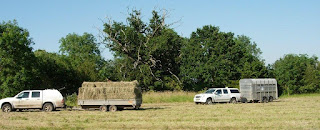At this time of year, ivy becomes much more noticeable in
hedges and trees. Once the summer cover of leaves has fallen, ivy is revealed as
dark silhouettes in the midst of hedgerows with its dark evergreen leaves gleaming
in strong contrast to the twiggy winter outline of the deciduous trees and
shrubs.
 Ivy flowers in early autumn and is a valuable late source of
nectar, particularly for flies and wasps which are often attracted in considerable
numbers so the whole ivy plant is seemingly a ‘buzz’.
Ivy flowers in early autumn and is a valuable late source of
nectar, particularly for flies and wasps which are often attracted in considerable
numbers so the whole ivy plant is seemingly a ‘buzz’.
The flowers fade to yellow circular ‘styles’ which occur in globe
like clusters – resembling yellow fairy lights, that bring a sparkle hedgerows
in the dark days of November and December.
As December progresses the berries of ivy begin to develop
and ripen, turning from a pale green to a dark almost black. Once ripe the
berries are much favoured by birds, especially the wood pigeon. On a winter’s
day, often the only noise to be heard in the hedgerows of the meadows is a wood
pigeon as it clatters and flaps about in ivy, clumsily gathering a feast!
Ivy is also a very valuable roosting and hibernating habitat
for birds and insects. The waxy evergreen leaves provide weatherproof shelter
and can also be rich frost-free pickings for insectivorous birds like long
tailed tit, wren and robin.
Of course at this time of year, there is a long tradition of
using ivy, along with other evergreens like holly, to ‘deck the halls’. Being
evergreen, both holly and ivy have strong associations with midwinter as
evergreens are a sign of life and hope at a time of year when all around seems
dark and dead.


































+-+Copy.JPG)















